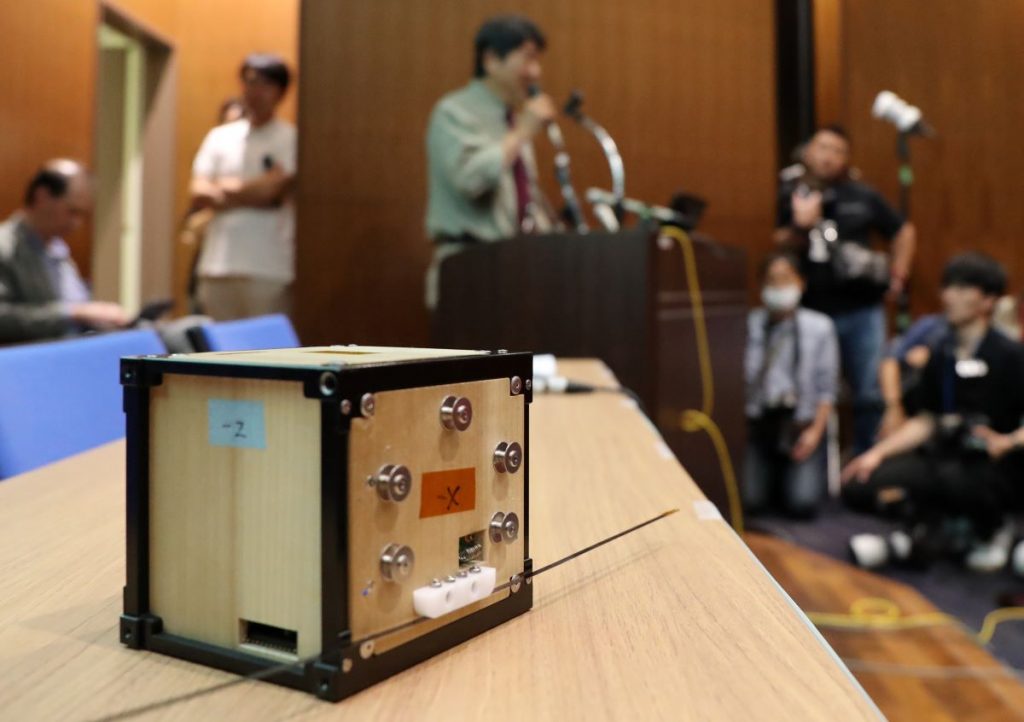このページを 日本語 で読む
On May 28, Kyoto University and Sumitomo Forestry announced the completion of the world's first wooden satellite, a project that has been years in the making. The artificial satellite is set to be handed over to the Japan Aerospace Exploration Agency (JAXA) in June. Then, it will be launched from the Kennedy Space Center by a SpaceX rocket in September, bound for the International Space Station (ISS). The primary goal of this mission is to explore the potential of using wood in space by analyzing data transmitted from the satellite.
Traditional artificial satellites are typically made of metal. However, concerns have been raised about the environmental impact of oxidized aluminum particles released during the satellites' re-entry into the atmosphere. In contrast, wooden satellites would burn up completely during re-entry. It would not release harmful substances, offering a more environmentally friendly alternative.
Using Traditional Wood Joinery
Named LignoSat, the wooden satellite measures approximately 10 centimeters on each side and weighs about 1 kilogram. It is equipped with solar panels on multiple surfaces.
Takao Doi is a program-specific professor at Kyoto University's graduate school and an experienced astronaut leading the research. Emphasizing the importance of this innovation during a press conference, he stated, "The wooden artificial satellite represents the first step towards carbon neutrality in space exploration."
The project began in 2020 to verify the potential of using wood in space. After conducting experiments to assess durability and other factors, the team selected wooden boards from the Hokkaido-grown Japanese cucumber tree for the satellite. Then, these boards were assembled using the traditional Japanese wood joinery technique tomegata kakushi ari kumitsugi, which does not require screws or adhesives.
Environmental Advantages
After being transported to the ISS this autumn, the satellite will be deployed to outer space for about six months. During this period, the satellite will undergo significant temperature fluctuations. Its wooden structure's deformation will be monitored to evaluate how well wood can withstand the harsh space environment. As global competition in space development intensifies, the fate of this innovative wooden satellite will attract significant attention.
"I think wooden artificial satellites should become mainstream in the future," said Takao Doi at the press conference.
Currently, the international standard is for small satellites to re-enter the atmosphere and burn up upon completing their missions. This is to prevent them from becoming space debris. However, oxidized aluminum particles released during re-entry can disrupt the Earth's energy balance with the sun. This could potentially cause abnormal weather like global cooling.
Could Wooden Satellite Become Mainstream?
According to Doi, the current number of artificial satellites does not pose an immediate threat to the Earth's environment. However, the increasing frequency of satellite launches will inevitably raise future risks.
Amidst rising concerns about environmental impact, the wooden satellite has emerged as an eco-friendly alternative. Doi stated, "Our goal is to develop satellites made entirely of wood, including the electronic circuit boards." He emphasized that the approval of wood for use in space represents "a significant step forward."
Doi underscored its future potential, expressing, "Our goal is to develop satellites made entirely of wood, including the electronic circuit boards."
Professor Yosuke Yamashiki from Kyoto University's Graduate School is also a project member. He explained, "By demonstrating how wooden satellites contribute to reducing space debris, we aim to promote the use of wood in larger satellites through agencies like NASA."
This article was first published on JAPAN Forward on June 6, 2024.
このページを 日本語 で読む
